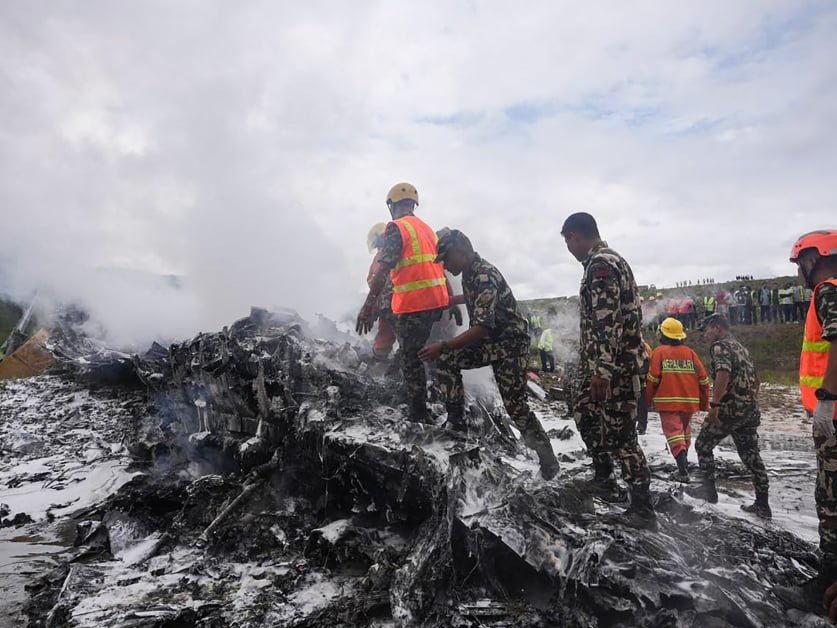The recent tragic incident at Nepal’s Kathmandu airport resulted in the loss of 18 lives when an aircraft crashed upon landing, leaving the pilot as the sole survivor. This event has prompted concerns about aviation safety and raised questions about airport protocols. In this article, we will examine the details of this catastrophic event and analyze the aftermath of the devastating crash.
A Saurya Airways plane carrying two crew members and 17 passengers crashed shortly after takeoff and erupted in flames. The Civil Aviation Authority of Nepal confirmed that the pilot was the only survivor of the crash and was receiving medical treatment. The incident occurred immediately after the 11:11am takeoff of the 50-seat Bombardier CRJ200, en route to Pokhara, before crashing into the eastern part of the airport.
The cause of the crash is currently under investigation, with the bodies of the 18 victims, including a Yemeni national and a child, taken to the TU Teaching Hospital in Kathmandu for autopsy. Images shared by Nepal’s military displayed the charred and fragmented fuselage of the plane, while footage showed rescue workers sifting through the wreckage.
Tribhuvan International Airport, Nepal’s primary airport for both domestic and international flights, was temporarily closed following the crash. Situated in a valley surrounded by mountains, the airport presents a challenging landing scenario for pilots, particularly with the need to navigate through a mountain opening. Despite the growth of Nepal’s aviation industry in recent years, the country has a troubling history of aviation accidents, attributed to inadequate training and maintenance exacerbated by its rugged terrain.
Nepal’s airfields often feature hazardous runways flanked by snow-capped peaks, posing challenges for even experienced pilots. Additionally, the region’s unpredictable weather conditions further complicate flying operations. Previous aviation disasters in Nepal, such as the Yeti Airways crash in 2023 and the Bangladeshi plane crash in 2018, highlight the risks associated with flying in the Himalayan nation.
The tragic history of aviation accidents in Nepal includes the 1992 Pakistan International Airlines crash and the 2018 Thai Airways crash, underscoring the dangers posed by the country’s challenging airspace. As investigations into the Kathmandu airport crash continue, the aviation industry faces renewed scrutiny over safety standards and operational procedures in Nepal.
Source: Al Jazeera and news agencies


